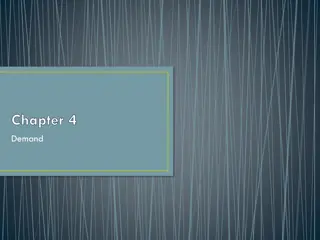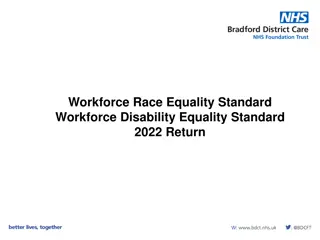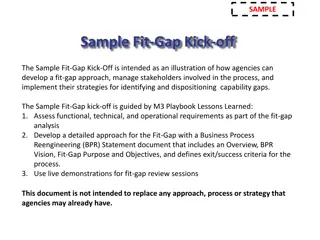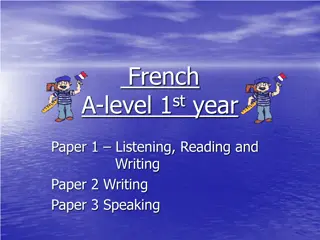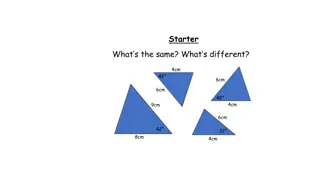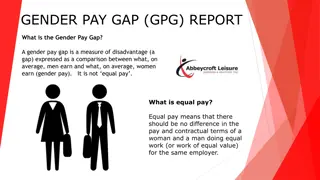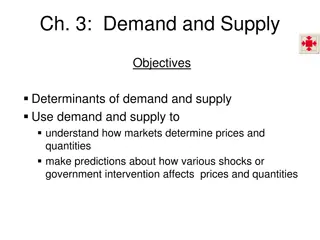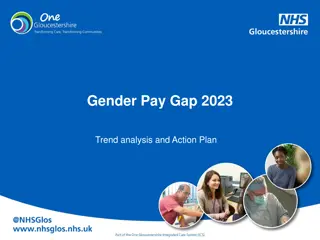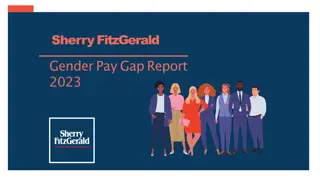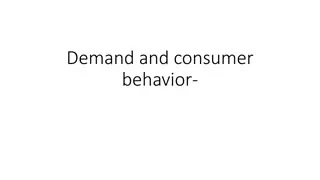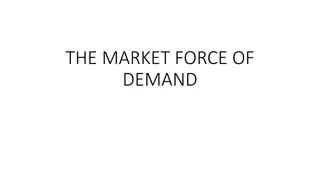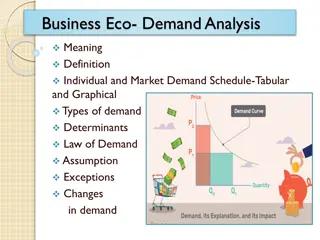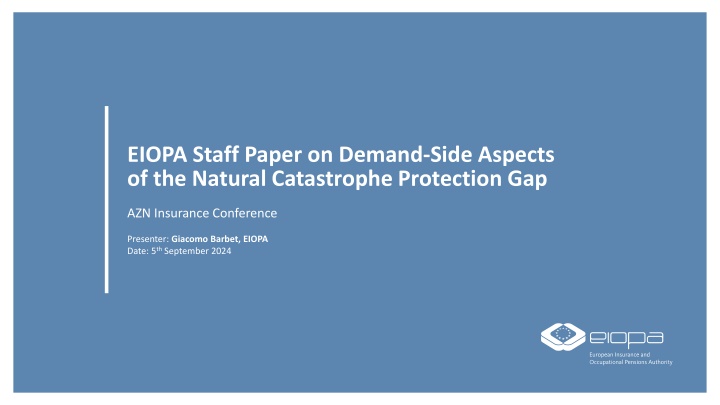
Demand-Side Factors in NatCat Insurance Uptake
Explore the demand-side barriers impacting natural catastrophe (NatCat) insurance uptake, focusing on consumer experiences and financial conditions. Learn about the challenges consumers face and potential measures to address limited coverage in Europe.
Uploaded on | 3 Views
Download Presentation

Please find below an Image/Link to download the presentation.
The content on the website is provided AS IS for your information and personal use only. It may not be sold, licensed, or shared on other websites without obtaining consent from the author. If you encounter any issues during the download, it is possible that the publisher has removed the file from their server.
You are allowed to download the files provided on this website for personal or commercial use, subject to the condition that they are used lawfully. All files are the property of their respective owners.
The content on the website is provided AS IS for your information and personal use only. It may not be sold, licensed, or shared on other websites without obtaining consent from the author.
E N D
Presentation Transcript
EIOPA Staff Paper on Demand-Side Aspects of the Natural Catastrophe Protection Gap AZN Insurance Conference Presenter: Giacomo Barbet, EIOPA Date: 5thSeptember 2024
EIOPA staff paper on addressing the NatCat protection gap Focus on demand-side measures 3 sections Demand-side barriers Possible measures to address NatCat insurance uptake affecting uptake demand-side barriers 2 EIOPA studies on demand-side aspects covering 2 main sources EIOPA s Eurobarometer survey 8 EU member states
NatCat uptake among EU consumers EIOPA s 2023 Eurobarometer survey results* Insurance coverage for natural catastrophes (NatCat) in Europe remains limited In most European countries, NatCat coverage is not mandatory It is common to offer NatCat coverage as an optional add-on, often bundled with property insurance or tied to a mortgage Consumers with partial or full NatCat coverage Consumers that don t know or uninsured consumers relying on the state * Fieldwork: 19/7 - 27/7/2023 - European Union: 26,168 respondents - Slovenia: 1,026 respondents
Demand-side factors affecting uptake Results from EIOPA s study on consumer experiences Income and financial conditions impact insurance uptake, with premiums often seen as expensive or unaffordable Respondents that are uninsured because they find coverage to Many consumers prioritise premium costs over coverage quality, leading to a perception that insurance offers poor value, even when it doesn t be too expensive* Financial condition Lower-income consumers may face higher premiums or uninsurable housing due to poorer housing conditions Lack of clarity on costs and coverage contributes to consumers perceiving NatCat insurance as too expensive Lack of clarity Limited understanding of insurance, coupled with low financial literacy, leads to misperceptions about affordability and limited understanding The complexity of choosing the right policy often deters consumers from purchasing NatCat insurance * Sample: 4,857, Countries in scope: Belgium, Germany, Romania and Spain
Demand-side factors affecting uptake Results from EIOPA s study on consumer experiences Respondents that trust insurers to pay NatCat claims* Negative past experiences, either personal or within the community, can significantly deter NatCat insurance uptake Lack of trust and previous Consumers with positive experiences of quick payouts are more likely to buy insurance, while widespread distrust due to past issues reduces interest in coverage negative experience Respondents that are uninsured due to perceived low risk of NatCat* Many consumers don't purchase NatCat coverage due to a lack of awareness or misperception of the risks they face Misperception Risk perception is often influenced by personal experience of risks Consumers who have encountered NatCat events are twice as likely to be insured compared to those who haven't * Sample: 4,857, Countries in scope: Belgium, Germany, Romania and Spain
Demand-side factors affecting uptake Results from EIOPA s study on consumer experiences and EIOPA s Eurobarometer Respondents believing that the State should cover NatCat losses* High expectations of State intervention lessens consumers willingness to buy Nat Cat coverage Expectations of EIOPA studies reveal that in areas with low insurance uptake, State support is often perceived as guaranteed, though this may not be the case State intervention Consumers with partial or full NatCat coverage split by house tenure** The method of selling NatCat insurance, often tied to mortgage acquisition, limits its uptake, especially among non-homeowners For many, NatCat coverage is seen as an obligation rather than a benefit, reducing its appeal Sales practices In several Member States, the complexity of purchasing home insurance is a significant barrier to uptake Sources: * Sample: 4,857, Countries in scope: Belgium, Germany, Romania and Spain **EIOPA s 2023 Eurobarometer survey
Possible demand-side measures to increase uptake EIOPA s study on demand-side barriers * consumer-tested several demand-side measures Policy measures Communication measures Social norms Tax rebate Showing that many in the community filed disaster claims last year, Tax benefits for homeowners with most quickly paid out, boosting trust in insurers Risk Mapping Price perception Website to centralise data on natural catastrophes, informing users Comparing insurance costs to five snacks or small lunches a month, of potential risks and guiding them on necessary insurance coverage putting the expense into perspective Comparison websites Risk perception Independent tool to help people compare all insurance products Highlighting the number of damaged houses in the region covering natural catastrophes Risk reduction Perception of state compensation Premiums reductions for homeowners who implement risk Emphasise the limitations of government compensation, prompting mitigation measures people to consider who will cover the remaining costs * Sample: 1,500; Countries in scope: France, Greece, Italy, Sweden
Possible demand-side measures to increase uptake Results from EIOPA s study on demand-side barriers * EIOPA analysed how different combinations of policy and communication measures affect the likelihood of increasing NatCat coverage Price perception 16% 44% 40% Tax rebate Social norms 17% 42% 41% Risk perception 13% 42% 45% Perception of state compensatoin 16% 43% 42% Price perception 17% 49% 35% Risk mapping Social norms 15% 49% 36% Risk perception 17% 45% 38% Perception of state compensatoin 19% 48% 34% Price perception 17% 46% 37% Comparison website Social norms 15% 47% 38% Risk perception 16% 44% 39% Perception of state compensatoin 15% 48% 37% Price perception 16% 48% 36% Risk reduction Social norms 14% 46% 40% Risk perception 15% 44% 42% Perception of state compensatoin 18% 43% 39% Decreased Unchanged Increased * Sample: 1,500; Countries in scope: France, Greece, Italy, Sweden
Possible demand-side measures to increase uptake Takeaways from the results of the EIOPA s study on demand-side barriers Increase risk awareness and coverage availability through digital tools that highlight individual risks Increasing consumers awareness of risk and coverage Develop accessible platforms for consumers to easily assess their property's risk levels Use targeted messaging on risks and coverage options, especially before renting or buying property Offer premium discounts for implementing risk-mitigation measures, reducing insurer risk and encouraging coverage uptake Incentivise consumers to see NatCat insurance as essential rather than optional by linking coverage to risk mitigation efforts Incentivize uptake Address cost-benefit biases by clearly communicating the advantages of risk-mitigation measures and the associated insurance benefits
Possible demand-side measures to increase uptake Takeaways from the results of the EIOPA s study on demand-side barriers Simplification of the purchasing process Promoting product simplicity Promote simpler, standardised products that cater to consumer needs and understanding, boosting confidence in purchasing Streamline the purchasing process with user-friendly, digital channels to reduce effort and transaction costs Enhance clarity by providing detailed information on coverage, exclusions, and limits to avoid mismatches and build trust Ensure sophisticated products remain available for relevant target markets, while simplifying options for broader accessibility Focus on making the consumer journey simpler for those already aware of risks and available coverage, boosting overall uptake Improve consumer understanding and product comparability through independent, user-friendly comparison tools
Public consultation of the staff paper Changes after the public consultation that took place from July 2023 to October 2023 EIOPA believes that clear communication to consumers is essential However, EIOPA agrees with stakeholders that disclosures alone isn t sufficient Disclosure The staff paper has been updated to emphasise the need for simple, clear, and comparable information, delivered at key moments The paper has been amended to take into account some suggestions (mostly on claims handling) on how to increase trust Trust Some stakeholders questioned the value for POG POG EIOPA emphasized in the Paper the importance of POG in terms of target market assessment, product design and product testing has been further underlined in the paper
THANK YOU! For more information visit: https://www.eiopa.europa.eu


